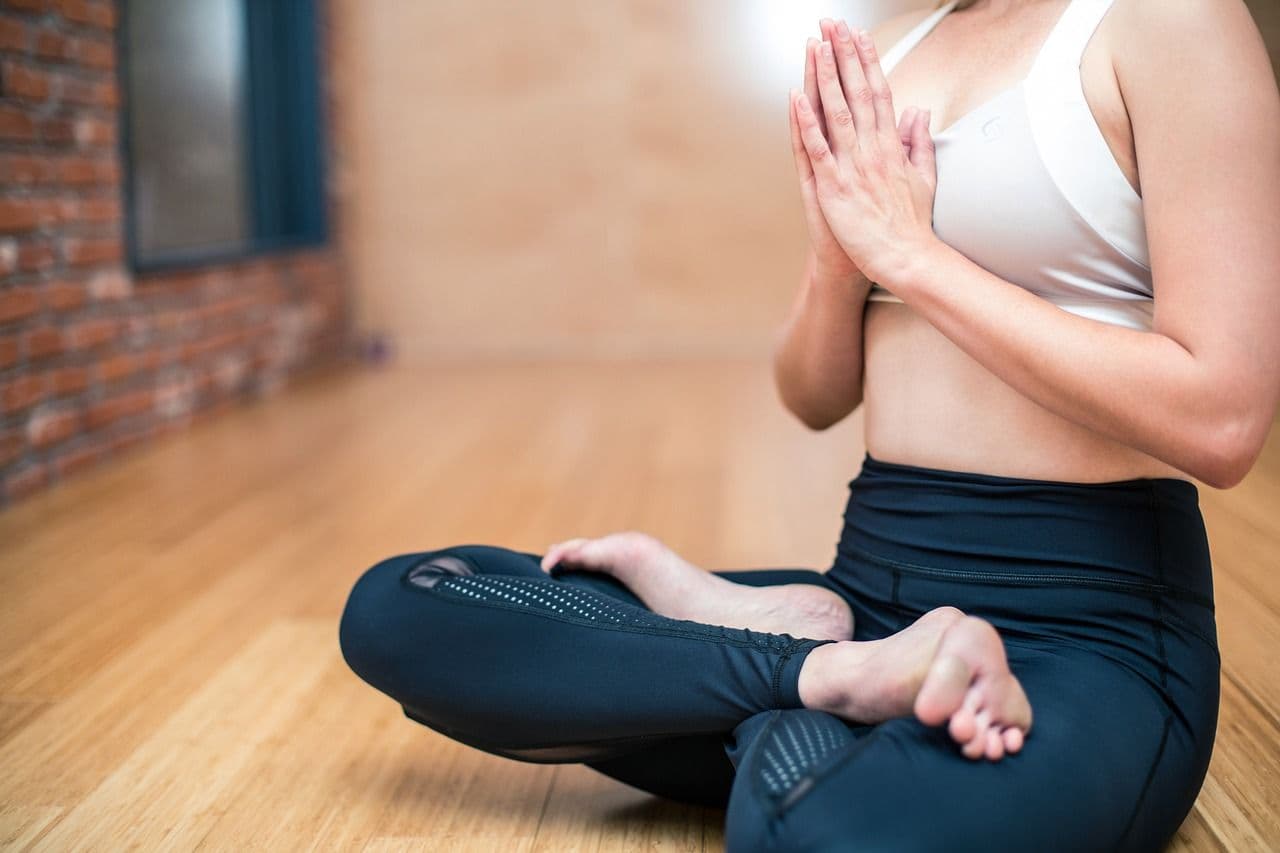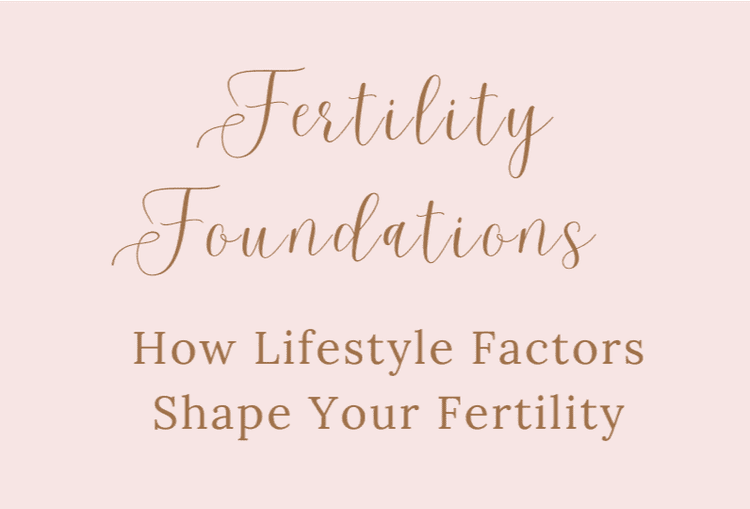00:00:00 All right, welcome. So in this video, I am going to talk to you a little bit about what exactly fertility yoga is and what its benefits are for your fertility journey. So I think it's important to mention that all forms of fertility yoga are going to be slightly different depending on the teacher. I'm going to speak specifically to the type of fertility yoga that I teach, and I call that my breathe with Lauren fertility yoga. So my yoga is a gentle style of Hatha yoga, and I call that my breathe with Lauren fertility yoga. So my yoga is a gentle style of Hatha yoga, And Hatha Yoga is a very traditional form of yoga, which includes both the yoga postures, which are the asanas, the breath work, which is what we call pranayama, as well as meditation. And when I am designing my fertility yoga classes, I always design them around a particular theme.
00:00:52 And because I've been doing this work for many years now, I know the themes that are needed the most. So often there are themes that relate to pain points that you might be experiencing on your fertility journey. So often there are themes that relate to pain points that you might be experiencing on your fertility journey. And I really like to touch upon those emotional pain points. So what are the benefits of fertility yoga? Now, when we're doing breathwork, we are ultimately working with the nervous system. And when we work with the nervous system, the idea is we're trying to bring you into a parasympathetic state. This is a state of down regulation where you get to come into your rest and digest response or your rest and reproduce response.
00:01:23 This is a state of down regulation where you get to come into your rest and digest response or your rest and reproduce response. Of course, because if your body is in a stress response, then that's going to be signaling to your body that it's not safe. And if your body is not experiencing safety from a point of view of your nervous system, then it will probably do everything that it can to prevent conception from occurring. because why would you want to conceive your baby in an environment that wasn't safe? So this is why it's so important to learn to manage your stress and to regulate your nervous system. So this is why it's so important to learn to manage your stress and to regulate your nervous system. The stress hormones are adrenaline and cortisol.
00:02:07 And of course, when we start to get out of a state of chronic stress, then we start to reduce the levels of adrenaline and cortisol in our body. And this ultimately leads to relief. As far as the asanas go or the postures that we take in the fertility yoga practice, as well as the gentle movements that we do, the goal of these postures is to promote better alignment in the pelvis and in the reproductive organs, but also to enhance blood flow to that space. As far as the asanas go or the postures that we take in the fertility yoga practice, as well as the gentle movements that we do, the goal of these postures is to promote better alignment in the pelvis and in the reproductive organs, but also to enhance blood flow to that space. So we're looking to increase circulation and enhance blood flow to the reproductive organs, which are located inside of your bony pelvis. And then some of the postures we do are also to bring more circulation and blood flow to the glands of your brain, and specifically the pituitary gland, because the pituitary gland is the gland that's responsible for secreting the sex hormones. And then some of the postures we do are also to bring more circulation and blood flow to the glands of your brain, and specifically the pituitary gland, because the pituitary gland is the gland that's responsible for secreting the sex hormones.
00:03:07 So you might have heard about bringing your hormones into balance or regulating your hormones. So when we look to improve circulation to the pituitary gland, this can also help balance your hormones. In my fertility yoga classes, I like to include words that serve as affirmations or empowering In my fertility yoga classes, I like to include words that serve as affirmations or empowering beliefs or mantras. I also do this in my guided meditations. And the way that these affirmations or mantras work is the idea is that they are getting you at a point when you're not in your critical mind. So throughout the yoga practice, we're bringing you out of your head into your body, so that when we offer the affirmation in that moment, what's going to happen is that your subconscious mind is going to be more open to receiving that statement.
00:03:37 And the way that these affirmations or mantras work is the idea is that they are getting you at a point when you're not in your critical mind. So throughout the yoga practice, we're bringing you out of your head into your body, so that when we offer the affirmation in that moment, what's going to happen is that your subconscious mind is going to be more open to receiving that statement. Whereas if you were kind of in your normal day-to-day life, you know, and I were to say that affirmation that your mind might reject it because it's not in alignment with your current belief system. So in this way, with time, this is something that's happening is that fertility yoga can really lead to an improved mindset and an improved mood. So this is what a lot of my students will report feeling after class. So one of the questions I get asked often, and you might be wondering yourself, well, how often do I need to practice in order to experience these benefits, Lauren? So one of the questions I get asked often, and you might be wondering yourself, well, how often do I need to practice in order to experience these benefits, Lauren? So, of course, the more often you practice, the more benefits you will feel, right? However, I recognize that it's not possible for everybody to be practicing every day, or maybe even, you know, the three, four times a week that I like to recommend.
00:04:54 So I think that it's very important that you start where you are. It's important to remember that not all practices that need to be a full practice, that's 60 minutes in length, 20, 30 minute practice can be very impactful. and I really believe that practicing more often throughout your week for shorter periods of time is going to be more beneficial than let's say doing one 60-minute class once a week and because the idea is that the more you practice this consistently what you're practicing on your mat the idea is that the more you practice this consistently what you're practicing on your mat your yoga mat you're then going to take with you into the moments of your day off of your mat and And this is how you become really empowered by these practices and they begin to serve you in your day-to-day life.
00:05:45 I think it's also important to mention, while you might feel the benefits of the yoga practice immediately after practicing, for these benefits to really make their way into the cellular structure, into your DNA, for these benefits to really make their way into the cellular structure, into your DNA, Okay. Research says that it does take three to six months for these lifestyle changes, okay, to impact your hormones and your follicles. So if you are looking at some of the recent test results that you might've gotten from a fertility clinic, okay, and we want to be improving those numbers, okay, it will take a minimum of three months of consistent practice in order to see the change that you're desiring. All right. So this is something that I just mentioned, right?
00:06:29 It's important to start where you are. It's important to start where you are. All too often, I see my clients frozen in blame or shame, you know, for whatever reason it is that they're not able to implement or do the things that they say that they want to do. Okay. So if that's you, if you have come away from your practice and you're feeling some heaviness or resistance of getting back into it, I want you to just start where you are, have realistic
00:06:55 expectations. If you don't currently have yoga practice, don't set out to practice five times a week because then you're just probably setting yourself up for failure. If you don't currently have yoga practice, don't set out to practice five times a week because then you're just probably setting yourself up for failure. So be really realistic about how often that you want to practice, set that intention, and then put the wheels into motion. I think it's important to note that the fertility practices that I offer are perfect for beginners and avid yoginis. And so a lot of my clients really love yoga and already have an existing yoga practice. And then they like my practices because they feel that they can go really deeper into their And then they like my practices because they feel that they can go really deeper into their
00:07:32 practice. That being said, I also have a lot of clients and students that have never done yoga before. And I even have clients that, you know, will say to me things like, but Lauren, you know, my body doesn't look like the shape of your body. And I find that intimidating. And I want to practice at home. because I don't feel comfortable going to a yoga studio because my body shape is different
00:07:53 than the body shape of people at the yoga studio. So if that's you, then developing a home practice is perfect for you. then developing a home practice is perfect for you. So these practices will meet you where you are. And if you're a beginner, they're going to be perfect for you. If you are a yoga teacher,
00:08:09 they will also serve you. Don't compare yourself as you're practicing. something that we we that i i encourage you to do is to be non-judgmental and this is not just me this is the practice of mindfulness and all of the yogic traditions is to practice with the spirit of non-judgment of equanimity okay i already mentioned what you practice on your mat will serve you off non-judgment of equanimity okay i already mentioned what you practice on your mat will serve you off your mat um and then the final thing that i wanted to say about this is it's important to note that these practices are not meant to be a workout. And if this has been your previous experience
00:08:46 with yoga, that you've gone to a class that felt like a workout and you didn't like it, or maybe you went to the class for that exact reason, because you wanted a workout, right? When you're going to start doing these practices, you're going to see that they're by no means a workout. And really the movements that we're doing, what we're practicing are mind by no means a workout. And really the movements that we're doing, what we're practicing are mind body practices to align your mind, heart, body, and spirit. So ultimately, you can come into harmony with yourself. You might be wondering if it's safe to practice fertility yoga if you're in the middle of doing a fertility treatment or procedure. And absolutely, I think it's important to continue
00:09:24 these practices to keep your body moving, to keep you out of your head and connected with your body in the middle of whatever fertility treatment or procedure that you are doing. in the middle of whatever fertility treatment or procedure that you are doing. especially during your two-week wait. I see so often that my clients in their two-week wait, this is a period of great stress and anxiety and very much getting into their head of hypervigilance of all of the sensations that they're feeling in their body.
00:09:50 So if you know that's you and you have a little bit of fear around doing practices during your two-week wait for whatever reason, because you think that it might prevent the procedure from working, I encourage you to move. And I really see that if you can do this, that you're going to notice and feel and experience
00:10:08 the benefits. And of course, always make sure to check in with yourself and your body and do what feels right for you. Be careful not to just take things that you read online or even a fertility doctor's recommendations like as truth. I know sometimes this is challenging for my clients and it makes sense, of course, because I know sometimes this is challenging for my clients and it makes sense, of course, because we want to do things right. We want to do everything possible that we can to make it work
00:10:38 out. However, when we're operating from that place of doing something that we've been told or that we feel we should do, and sometimes we can be overriding our body's signs and signals and needs. So I think it's really important to just always check in with yourself and really ask yourself, well, what do I need in this moment? What's going to feel good for me? And if it feels good, then that's your sign to keep on doing it. And if it doesn't feel good, then don't do it. then that's your sign to keep on doing it. And if it doesn't feel good, then don't do it. All right. So I hope that gives you a little bit better of an understanding of fertility yoga. And I hope that you try out the practices and I hope that they serve you.























